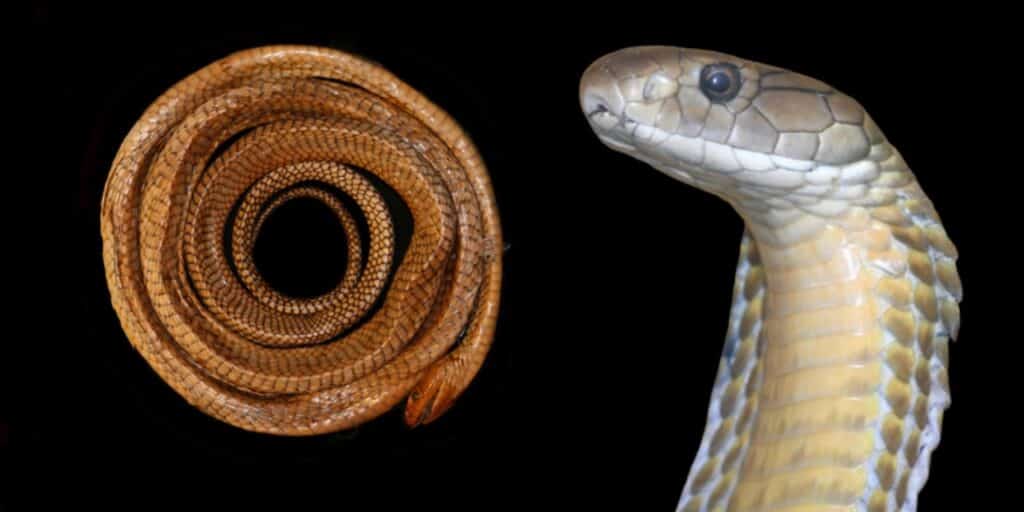
Researchers identified a new king cobra species that’s endemic only in the Philippines. It’s called the Luzon king cobra (Ophiophagus salvatana). | Photo from European Journal of Taxonomy
CEBU CITY, Philippines — A study identified a new species of king cobra that’s endemic only in the Philippines.
The European Journal of Taxonomy on Wednesday, October 16, published the latest research on the taxonomy of king cobra, considered the world’s longest venomous snake.
It presented a taxonomic revision of the king cobra species, with scientific name Ophiophagus hannah (O. hannah), as well as the discovery of two new species.
READ MORE:
Understanding king cobras: Why we should not kill them
TIMELINE: The unprecedented sightings of king cobras in Cebu
The researchers are composed of Indraneil Das, P. Gowri Shankar, Priyanka Swamy, Rhiannon C. Williams, Hmar Tlawmte Lalremsanga, P. Prashanth, Gunanidhi Sahoo, S.P. Vijayakumar, Jacob Höglund, Kartik Shanker, Sushil K. Dutta, S.R. Ganesh, and Wolfgang Wüster.
According to the research, one of the newly identified species of king cobra can only be found in Luzon, Philippines.
The researchers gave it the scientific name Ophiophagus salvatana, with Luzon king cobra as its common name.
“The range of the species is restricted to the Luzon islands in the northern Philippines,” they said.
Based on their research, the Luzon king cobra exhibited several distinct features that differentiate it from the other species in the O. hannah complex.
These included the absence of pale bands among adults, angular body bands in juveniles, higher number of body bands in juveniles, and lower Pterygoid tooth count.
READ MORE: Cobra recovered below a bookshelf in Tayabas City school
Poor taxonomy
The king cobras are common reptiles in Asia.
However, researchers pointed out that different taxon descriptions and type designations had ‘complicated the taxonomy of this species group.’
Taxonomy is the branch of science concerned in the describing, classifying and naming all living organisms.
“Despite being undoubtedly one of the most iconic snakes in the world, O. hannah had remained under-studied for close to a century,” they said.
In turn, they decided to conduct further studies into the king cobra species complex.
“Our nomenclatural and taxonomic decisions have extensive implications for the content, diversity and distribution of members of this genus, as well as the management of snakebite, species conservation and prospects for future research,” they said.
4 distinct species
Traditionally considered a single species, the authors used morphological data from 153 specimens and a recent molecular phylogenetic analysis to recognize four distinct species within the king cobra species or O. hannah complex.
“This revision has shown that the king cobras consist of four distinct species, each requiring separate consideration,” the researchers pointed out.
In the study, they found out that the O. hannah is found only within eastern Pakistan, northern and eastern India, the Andaman Islands, Indo-Burma and Indo-china, and south to central Thailand.
“We restrict the concept of Ophiophagus hannah s. str. to populations from eastern Pakistan, northern and eastern India, the Andaman Islands, Indo-Burma and Indo-China, south to central Thailand,” they explained.
They also said that the population of king cobra inhabitang the Sunda Shelf area, including the Malay Peninsula, the Greater Sunda Islands and parts of the southern Philippines are the Sunda king cobra (Ophiophagus bungarus).
Researchers hoped that their findings will contribute to the conservation of the king cobra species group, which the International Union of Conservation of Nature (IUCN) listed as vulnerable already due to widespread threats of their habitats.
“Besides their conservation implications, our findings may also have implications for toxinology and snakebite treatment,” they added.
